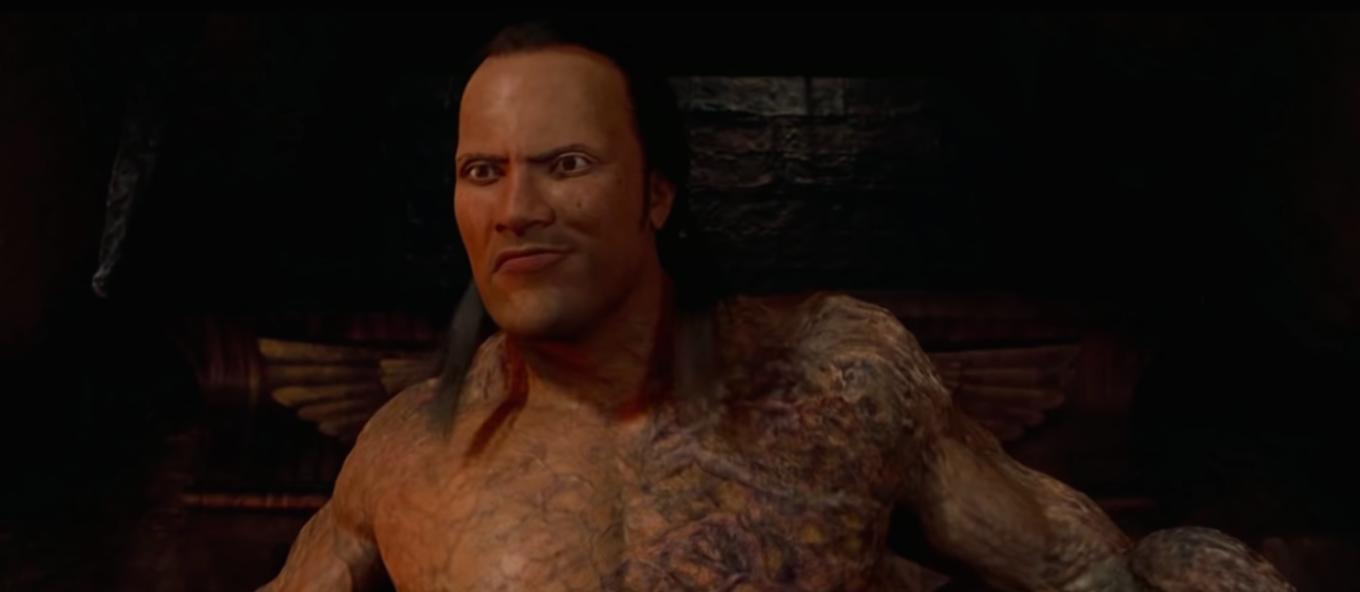Editorial Credit: Universal
In recent years, the landscape of blockbuster filmmaking has become a terrain of familiarity, with studios often recycling the same concepts in hopes of replicating Marvel’s unparalleled triumph with its cinematic universe.
As they churn out films designed to interlock within sprawling multi-movie canvases, the result frequently lacks the innovation and finesse that initially captured audiences.
The push to capitalize on shared universes not only dilutes originality but also sets a steep challenge for others to attain the same level of coherence and box office glory.
In addition to the overzealous expansion of movie universes, blockbusters have developed a penchant for dividing narratives into multiple instalments, leaving moviegoers hanging mid-story.
These forced cliffhangers can disrupt the narrative flow, leaving behind an incomplete and often unsatisfying experience.
Coupled with an overreliance on CGI, which has been known to stretch visual effects teams too thin, the result can be a subpar visual spectacle that falls short of the magic that should define the cinematic experience.
Movie Tropes Across Multiple Releases
9. When Films are Divided
Movies extending their narratives over several releases often cultivate deep, engaging plots. Each movie ideally stands alone as a coherent narrative with a solid beginning, middle, and conclusion.
However, some movies end abruptly, halting narrative flow and leaving audiences hanging.
Such breaks may seem like mid-story pauses and can lead to dissatisfaction if viewers need to wait over a year for the story to continue.
Emulating TV series cliffhangers, these movies challenge traditional expectations of a film’s structure by segmenting their storytelling across distinct parts.
- Viewer Expectation: Films should offer a complete story.
- Audience Satisfaction: Unexpected breaks can lead to dissatisfaction.
- Narrative Continuity: Pauses may disrupt storytelling flow.
Audience anticipation for sequels is often high, but sometimes sequels fall short of what is promised, leaving viewers disillusioned.
This can occur when franchises do not carry through with the setups or payoffs they tease.
8. Spin-Offs That Missed the Mark
Characters and Stories That Didn’t Resonate
- Characters Lacking Appeal: Spin-offs centered around characters that fail to captivate audiences can lead to unremarkable films.
- Engagement Issues: Without a compelling narrative, these movies often do not succeed in drawing viewer interest.
- Box Office Performance: Such movies usually underperform financially due to the lack of a solid fanbase or story investment.
- Expanding Universes: Attempting to broaden a franchise sometimes results in a convoluted and less appealing experience for viewers.
7. Excessive Use of Computer-Generated Imagery
The Challenge of Time Constraints
The rush to meet movie release dates can strain visual effects teams, leading to less polished computer-generated imagery despite the talent involved.
These intense deadlines mean that creating detailed 3D models, environmental tracking, design, and rendering – all of which are complex and time-consuming processes – are often rushed.
Movies with extensive CGI demands can push artists to their limits, and sometimes the final product doesn’t reflect their full capabilities.
It’s a challenging balance to maintain; achieving awe-inspiring visuals while operating under the crunch of a looming release timeline.
6. Notable End-Credit Sequences
Sequences Priming Audiences for Future Films
Movies occasionally conclude with scenes after the credits that tantalize viewers with the promise of upcoming titles.
These snippets should integrate smoothly rather than stand apart, overly overshadowing their preceding narrative.
A standalone, engaging cinematic tale is paramount; subtle nods to successive film chapters are a bonus, not a centerpiece.
Yet, blockbuster franchises frequently succumb to enticing viewers with blatant set-ups for the next installment, inadvertently diminishing the integrity of the current story.
5. Instances of Character Invulnerability
Protagonists’ Unfazed Recovery from Severe Injuries
When crucial characters face harm, films often equip them with an unspoken resilience, allowing them to proceed as though unscathed.
While it’s understandable that these figures are pivotal to the plot, the absence of realistic consequences following their injuries can break immersion.
Whether it’s a gunshot wound or a significant fall, the audience expects some level of lasting impact—be it a persistent limp or visible pain—something to acknowledge the gravity of their experience.
- Injury Portrayal:
- Often undermined
- Lacks lasting effects
- Expectation vs. Reality:
- Audiences anticipate some degree of authenticity
- Characters’ rapid recoveries can seem implausible
The consistent, immediate bounce back to action without real hindrances, though common in fiction, can at times lessen the weight of the narrative’s stakes.
4. Excessive Jump Cuts in Action Sequences
The Dizzying Effect of Overediting
Too many jump cuts in a sequence, especially one chock-full of action with ever-shifting camera angles, can turn watching into a chore.
Although the intention might be to drive up the intensity and pace, it unintentionally causes viewers to miss the finer points of the action.
In contrast, scenes that take their time or unfold within a single shot can bring a touch of authenticity and grandeur.
Scenes that are pivotal, such as a critical showdown or a high-stakes pursuit, benefit when they are allowed to breathe – providing clarity rather than a rapid-fire jumble of images.
3. Excessive Humor in Dramatic Sequences
Diminishing the Weight of Intense Moments with Levity
It can be disconcerting when films constantly throw jokes into the mix during intense or somber moments.
This tendency not only risks undermining the gravity of the scene but can decrease the overall impact of the narrative’s serious moments.
Balancing an emotional range is crucial, and while transitioning from somber to light-hearted scenes is a crafty way to handle a story’s rhythm, the interjection of humor should not serve to nullify the potency of dramatic sequences.
Movies can harness a spectrum of emotions, navigating through tough challenges and joyful high points, but the placement of humor should be thoughtful, ensuring it doesn’t eclipse the significance of the moment.
2. Unexplained Call Terminations
Real-Life Call Disconnections
Movies often compress a full narrative into roughly an hour and a half, necessitating swift scene transitions.
During phone conversations, quick cuts after a chat are common, aiding pace. Yet, when a character ends a call without a goodbye, it can be jarring.
In real life, such abrupt disconnections without a word of farewell are rare. Striving for realism, filmmakers might overlook this detail, but it’s these nuances that can maintain or disrupt the audience’s immersion.
1. Ignoring the Road Ahead
- Distractions: Characters often get engrossed in deep conversations.
- Result: Might miss an oncoming vehicle, leading to a collision.
- Prolonged Eye Contact: Drivers in films tend to look at passengers for extended periods.
- Effect: Breaks realism, reminding viewers it’s a choreographed scene.




